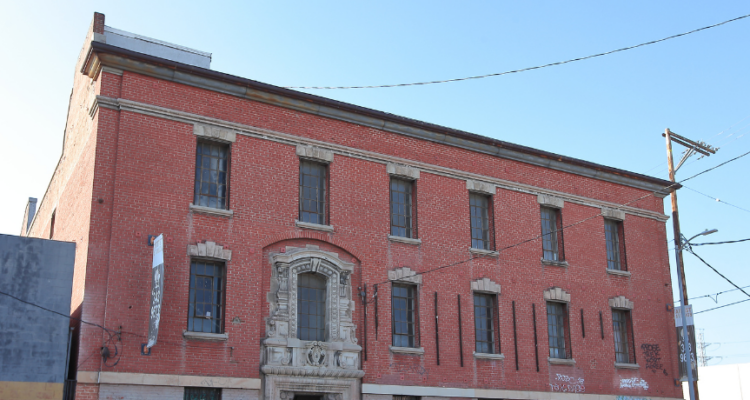
Explanation of LGBTQ Terms
What does "LGBTQ" mean? An overview of microsite vocabulary.
One of the key challenges in understanding LGBTQ history is deciphering changes in word choice and language over time. Words that are common among community members and scholars today may have had vastly different meanings (or not existed at all) in the past.
We recognize that there are many different interpretations of, and a sensitivity to, various terms and how they are applied. We welcome your feedback as we expand on our work to promote and preserve LGBTQ historic places.
Though the terminology continues to evolve, we chose to use the acronym LGBTQ—Lesbian, Gay, Bisexual, Transgender, and Questioning and/or Queer—because we feel that it most broadly incorporates members of non-heteronormative communities.
The “LGBTQ” acronym is a relatively recent development in queer activism and scholarship.
Despite its limitations, our microsite uses this contemporary framework to discuss LGBTQ historic places, events, and people. This version of the LGBTQ+ acronym allows the microsite to change and evolve as the stories of lesser-known people and places come to light.
Though not used broadly here, the plus sign (+) acknowledges all non-heteronormative identities that are not specifically mentioned or that are yet to be articulated.
What is “Heteronormativity”?
The term “heteronormativity” (or heteronormative) originated among scholars of queer theory and is used to describe the commonly held perspective that heterosexuality is the normal, preferred, and default sexuality of individuals within a society.
Under this paradigm, social expectations around gender align (and often conflate) with Western ideals of the heterosexual male and female.
When this term is used on the microsite, it references the broad range of traditional sexual and gender identities and expressions within American society. “Non-heteronormative” refers to individuals who do not adhere to these expectations.
“Queer” as an Umbrella Term
By contrast, “queer” is often used to describe all non-heteronormative individuals.
Before the 1990s, when “queer” was reclaimed by LGBTQ activists and scholars as a term that was all-inclusive and empowering, it was a pejorative word used to insult and demean those who were non-heterosexual and non-gender conforming.
Among younger LGBTQ individuals, who commonly do not identify with a specific LGBT+ label, “queer” is a popular term because it acknowledges the fluidity of gender and sexuality. Unlike the word “homosexual,” “queer” embraces a broad range of identities, including bisexual individuals.
Within the microsite, we use “queer” as an adjective rather than a noun to describe communities of individuals who are non-heteronormative. When used as a noun, “queer” continues to have a negative connotation.
“Homosexuality” in the Twentieth Century
“Homosexual” refers to an individual who engages in same-sex sexual behaviors. The term was widely used throughout the twentieth century yet used predominantly by heterosexuals in the second half of the century.
From the 1930s through the 1960s, LGBTQ individuals increasingly used the word “gay” to describe all non-heteronormative individuals. This changed in the 1960s, when LGBTQ activists politicized the word “gay” in an effort to obtain civil rights and access to social services.
It wasn’t until the 1970s that many queer women began to identify specifically as lesbians. The shift in language reflected the growing connection that lesbians felt to the experiences and struggles of heterosexual feminists, often outweighing their identification with gay men.
The word “homosexual” appears in this microsite within a historical context or when discussing significant LGBTQ locations that talk about the study of homosexuality within the medical field.
“Transsexual” Versus “Transgender”
“Transsexual” is a term that physicians employed in the early to mid-twentieth century to describe individuals who identified with and wanted to physically become members of the opposite sex.
“Transgender” is a term coined by Virginia Prince (the publisher of Transvestia who identified as a transvestite) in 1970, and is used as an umbrella term to describe transexuals, transvestites, and other non-gender conforming identities.
The word “transsexual” appears on this microsite within the context of the history of medicine, including the work of Dr. Elmer Belt. Otherwise, “transgender” is used.
“Latinx”—Inclusion, not a Typo
If you’ve seen references to “Latinx” individuals or communities online, you may have initially thought the word contained a typo. This increasingly popular term, however, is a gender-netural alternative to Latina/o and Latin@, which many have used in the past to acknowledge the gendered (masculine/feminine) nature of the Spanish language.
The Conservancy now uses the terms “Latinx” and “Chicanx” in our work. Though we recognize that different people and communities self-identify in different ways, “Latinx” and “Chicanx” are gaining ground in our cultural discourse as a way of acknowledging and respecting people who are transgender, queer, or gender fluid or non-conforming.
These terms may not always be appropriate when describing people and events in the past (ex. Chicano Moratorium), but we are incorporating them into our vocabulary as part of our commitment to inclusion. Learn more about this “lingustic revolution” from the Huffington Post >>